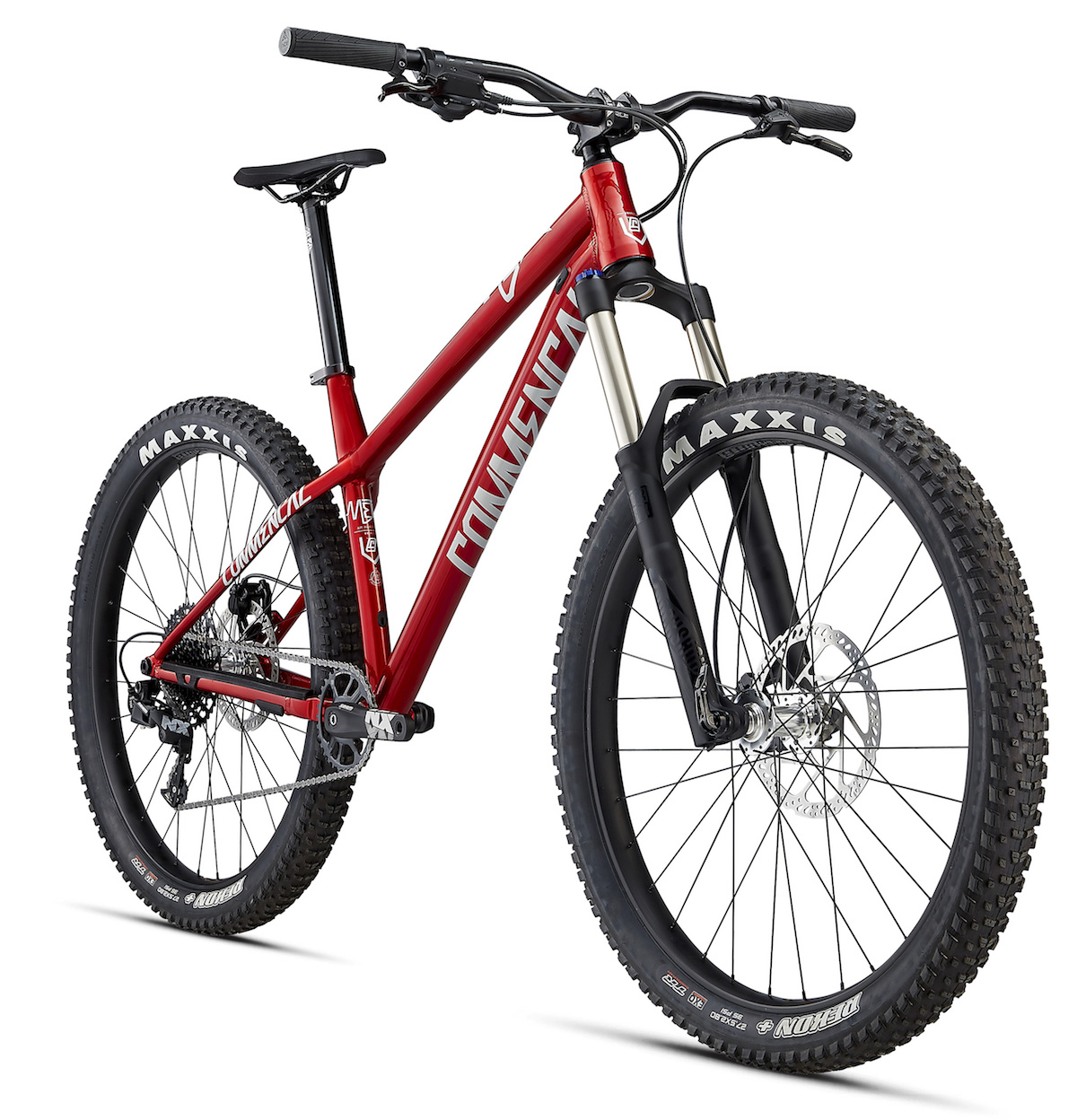

It also means the suspension will still kinda work on the descents if you forget to flick it back to open. It’s not a total lockout, so you still get usable traction. With the climb switch engaged, compression damping firms up, and that helps to stabilise the shock when you’re negotiating technical uphill features. With the lever hidden from rider view though, the action is awkward, so it takes a bit of practice to flick on and off. To help speed things along, I made regular use of the blue climb switch on the X2 shock. On the climbs, the Meta TR is still more ‘steady’ rather than ‘zippy’ though, no doubt due to its substantial 15+kg mass. As an example, the new Canyon Spectral 29 has just under 100% anti-squat at sag. In the lowest climbing gear it sits around 130% at sag, which is quite a bit higher than other bikes in this travel bracket. Commencal does claim that the anti-squat on the Meta TR is substantially higher than the previous generation frame.


Pedal efficiency from the single pivot layout is decent too. Heading uphill, the steep seat angle provides a fantastic climbing platform. What was cramped and uncomfortable on the flats, becomes relaxed and open on the climbs. Your weight is well balanced between the two wheels, and despite the slack head angle, the front tyre stays stuck without you having to double over.

Once the gradient clocks up beyond a certain angle, the Meta TR’s climbing position comes into its own. And that’s exactly why it’s built the way it is. This is a bike that was born in the heart of the Pyrenees, where the trail is either pointing up to the sky, or down to the valley floor. The thing is though, casually traversing isn’t really what the Meta TR was designed for. That being said, the sensation of your body being folded up is more pronounced on the Meta TR than we’ve experienced elsewhere, and on longer and more traversing backcountry trail rides, it proved to be quite a fatiguing bike to ride. Working separately on core and upper body strength helps immensely. This isn’t totally unusual for modern-geo trail and enduro bikes, and there’s a certain degree of readjustment that you need to go through if you’re coming off an older bike with a much slacker seat tube angle and a longer effective top tube. The Meta TR’s front end can feel a little floppy through slow-speed tech. The sensation of your body being folded up is more pronounced on the Meta TR than we’ve experienced elsewhere, and on longer and more traversing backcountry trail rides, it proved to be quite a fatiguing bike to ride. Confirmed Weight | 15.2kg (Medium, tubeless, w/out pedals).Stem | Ride Alpha Freeride, 50mm Length.Bar | Ride Alpha, Alloy, 31.8mm Diameter, 27mm Rise, 780mm Width.Brakes | Shimano Deore XT 2-Piston w/203mm Centerlock Rotors.Drivetrain | Shimano Deore XT 1×12 w/32T Crankset & 10-51T Cassette.Tyres | Maxxis Dissector EXO 3C Maxx Terra 2.4WT Front & Rear.Wheels | DT Swiss XM1700, Alloy Rims, 30mm Inner Width.Shock | Fox Float X2, Factory Series, 210×55mm.Fork | Fox 36 Float, Factory Series, GRIP2 Damper, 44mm Offset, 160mm Travel.Frame | 6066 Triple Butted & Heat Treated Alloy, Single-Pivot Suspension Design, 140mm Travel.2021 Commencal Meta TR 29 Signature price & specs We’ve been testing the top-dog of the range, the Meta TR 29 Signature. There’s a Shimano XT groupset, DT Swiss wheels, and a KS dropper post complete with the lovely Southpaw lever. For $7,699 AUD you’re getting a Fox 36 GRIP2 fork and a Float X2 shock, both Kashima-coated for maximum bling against the understated ‘Dirt’ frame colour. The bike we’ve been testing is the top-banger of the range the Meta TR Signature. The three base models are equipped with a 150mm travel fork and in-line shocks, while the two higher-end models get a 160mm travel fork and a piggyback shock. All models are built around the same alloy frame with 140mm of rear wheel travel and 29in wheels. Commencal offers five different spec levels in the Meta TR range, starting with the $3,499 AUD Meta TR Origin.


 0 kommentar(er)
0 kommentar(er)
